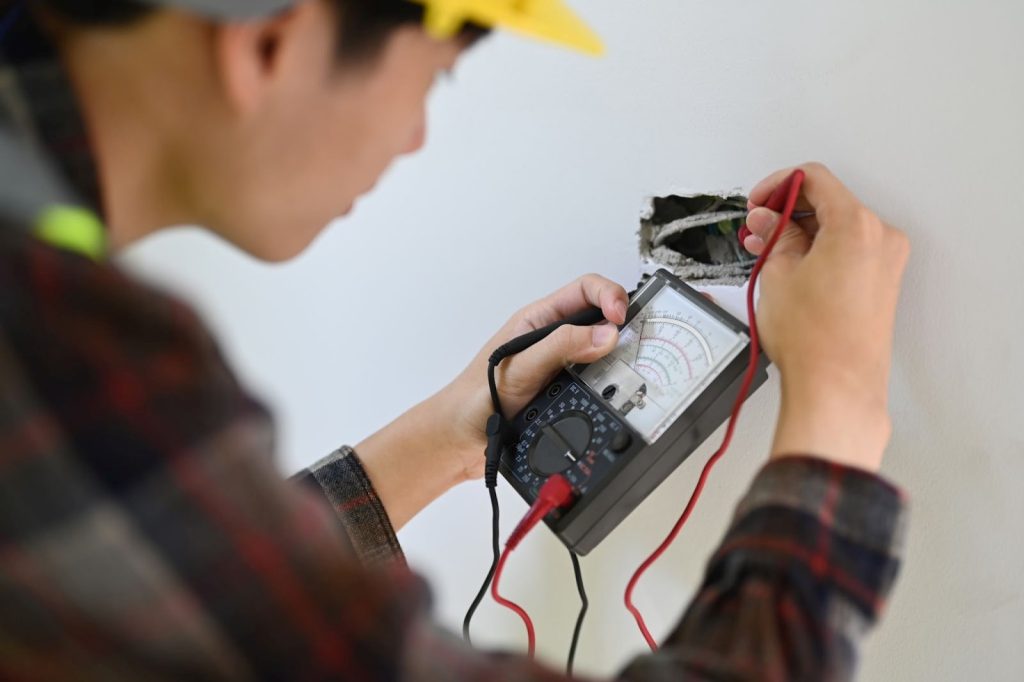Our gadgets have a tendency to fail us when we need them most. One of the reasons for this is the fact that they often suffer from malfunctions that evade detection until too late. Just as human beings need to make regular visits to their doctor, gadgets need to be regularly tested. The good news is that following a few basic precautions, you can conduct the tests yourself.
The most important thing to remember during testing is safety. For example, it is important to always wear rubber gloves and eye protection. You should also ensure that you never bring metal objects like sockets, plugs, or outlets in touch with bare skin. Similarly, you should never use extension cords unless they are specifically designed for testing purposes.
If you are unsure about your skills or equipment, you should seek professional help. After all, professionals have the special training and experience required to test your electronic gadgets safely. In this article, we give you an introduction to portable appliance testing (PAT), what it entails and everything you need to know to test your electrical equipment.
What is portable appliance testing?
Portable appliance testing (PAT) or PAT testing refers to a set of procedures required to ensure that portable electric equipment is consistently safe to use.
It involves inspecting the condition and insulating material of the cable, external casing, and plugs, as well as examining the interior and exterior of the device. PAT testing is applicable to all electrical equipment with a cord and the standard three-pin socket.
The PAT process ensures that your devices are in compliance with safety standards and regulations such as CE marking, FCC labeling, TÜV Rheinland certification, etc., while providing manufacturers with the assurance that the product meets the relevant requirements. The ultimate aim of PAT testing is to ensure complete electrical appliance safety.
What is a PAT test certificate?
Who can carry out PAT testing?
In theory, any competent person can carry out a PAT test, as long as they have an adequate knowledge of electricity. Although you don’t need a qualification to conduct a PAT test, there are some things you need to consider. For example, you should be able to understand what you’re looking at. If you can’t read the language in which the product documentation is written, you won’t be able to make sense of the information provided and you’ll probably miss out on important safety messages.
You should also be comfortable with electricity. Most people haven’t received adequate training to handle electricity safely, as a result they end up causing damage to gadgets that aren’t designed to take power surges. This might mean having to replace expensive appliances. Government guidelines state that you should only carry out a PAT test when you’ve received practical training, and that if you are not trained to test electrical equipment, it is best to consult a professional.
What type of equipment should be PAT tested?
The PPEA test is designed to ensure that electrical equipment complies with safety standards, such as those set out by BS EN 60601-1 and IEC 61010. If you find yourself wondering what types of equipment qualify for the test, and what kinds of gadgets you need to test, here’s a brief guide to help you out, complete with breakdown by electrical class and level of risk.
Electrical Class 1 Appliances
This type of electrical equipment has no protective features whatsoever, a fact that places it in a higher risk category. These devices rely solely on the earth connection to provide any form of protection against electric shocks. They include floor standing printers, photocopiers, fax machines, etc. Examples of class one electrical items include fridges, refrigerators and kettles.
Electrical Class 2 Appliances
These devices have some form of protective feature, either passive or active. Passive protections include the presence of a fuse or circuit breaker. Active protections include circuits that detect voltage levels and shut themselves off automatically. The risk level of a class 2 appliance is average. Examples of class two appliances include DVD players and TVs.
Electrical Class 3 Appliances
These devices are fully protected against electric shocks and are the safest class of appliance. They incorporate both passive and active protections. For example, an uninterruptible power supply (UPS), which provides backup electricity during power failures, is class 3. Examples of other class three electronic equipment include personal laptops and mobile phones.
What happens if an appliance fails a PAT test?
What is involved in a PAT test?
Different PAT tests have different objectives and therefore different procedures. For example, the purpose of the power quality audit test is to identify problems such as internal damage, water damage, or broken plastic casing that could cause safety issues, such as fire hazards, electric shock, poor performance, or even failure of electrical appliances. This is important because it helps ensure that you have a safe working environment.
A power quality audit test involves the following steps:
- A visual examination of the building structure and layout.
- Checking the wiring system for loose connections and damaged wires.
- Testing the grounding systems and earth bonding.
- Inspecting the mains supply for voltage and current surges.
- Checking the distribution network for voltage drops and spikes.
PAT testing for landlords: everything you should know
PAT testing requirements
Before you take it upon yourself to test all your electrical equipment, you should try and first understand all the requirements that accompany this responsibility. From whether or not it is a legal requirement to knowing the ins and outs of electrical safety and understanding potential hazards, below are the prerequisites or pre-tests that you need to keep in mind.
User check
A user check is the most simple form of safety check which can be completed by anyone who uses electrical devices. Simply inspect the external casing, plug, wires, and any visible defects prior to use to confirm that everything is working correctly, and check if there are any signs of damage.
This is a very important step because it ensures that the appliance is safe to operate and gives you confidence that it won’t break down while you’re using it. The process of conducting a user check is relatively straightforward and requires little technical knowledge. However, there are some things to keep in mind before performing one.
Before performing a user check, it’s essential that you know exactly what you’re looking for. For example, if you sense a burning smell coming from the unit, it could mean that the appliance needs to be replaced. If you notice anything unusual about the casing, plug, or wires, it’s best to stop immediately and call a professional electrician. Otherwise, you run the risk of causing further harm to yourself or the appliance.
Visual inspection
The visual inspection includes checking the outside of the appliance, and looking inside to check the wiring, circuit boards, and working parts. This process is normally done without any specialist tools or knowledge, as many people assume that they can do a basic visual inspection themselves. However, this approach can lead to incorrect conclusions about the safety of appliances and can cause further issues down the track.
Combined inspection and test
The combined inspection and test (CIT) process involves both visual inspection and electrical testing of appliances. This method allows you to identify potential problems early on and correct them before they become serious issues. This method is suitable where there is no risk of damage to the appliance during testing. However, it does not allow for the assessment of internal components or insulation, nor does it provide information on the effectiveness of the insulation.
Understanding legislation
There are several pieces of legislation that affect PAT testing in the UK. These include:
- The Health and Safety at Works (HSAW) Act, 1974: This law sets out how businesses and individuals manage health and safety risk in their workplace. Its application extends to appliance safety.
- The Manage of Health and Safety at Work Regulation, 1999: This is a piece of legislation that builds upon the HSAW act. It outlines the responsibilities of employers and provides guidelines on protecting worker health and safety.
- The Provision and Use of Work Equipments Regulation, 1998: This is another piece of legislation that affects PAT testing. It makes it clear that all electrical appliances used at work must be kept safe and sound. It also specifies that faulty appliances must be repaired.
Before embarking on a PAT test, you should familiarize yourself with national and local legislation as these laws set out the standards that need to be maintained.
How often should you conduct a PAT test?
There are no set guidelines for how many times it is necessary to carry out PAT tests. This is because each situation requires a different level of testing frequency. Factors that affect how frequently PAT testing needs to be performed include how often the appliances in question gets used, its classification, and how often it gets damaged.
PAT testing services
Testing electrical equipment is extremely important, especially if you are a landlord or business owner, who is responsible for the health and safety of other people. While anyone can check electrical appliance safety, it is essential to first have basic training and a rudimentary level of knowledge in order to ensure that you are testing equipment correctly.
If you are unable to achieve the relevant training, but still need to meet legal requirements, the best solution is to seek the help of a PAT testing company. Legionella Risk and PAT testing is the number one PAT testing expert in Scotland, with dedicated portable appliance testers who carry out both commercial and domestic PAT testing. Our qualified and experienced staff can accommodate all types of appliance testing, no matter how large or small.


